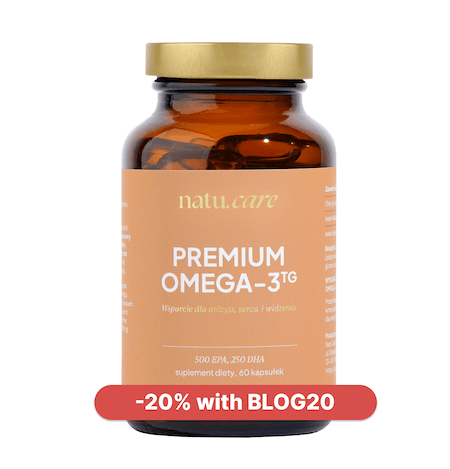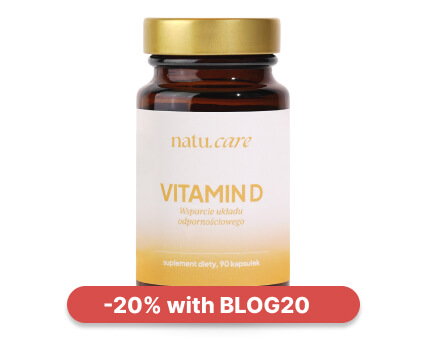Rheumatoid arthritis: what it is, symptoms, causes, medication
Read how to diagnose and treat rheumatoid arthritis.


Learn more about our editorial process
.

Learn more about our editorial process
.

Learn more about our editorial process
.

Learn more about our editorial process
.
Why you can trust us
Articles on Natu.Care are written based on scientific research, data from government websites and other reliable sources. The texts are written in cooperation with doctors, nutritionists and other health and beauty experts. Articles are reviewed before publication and during significant updates.
.Learn more about our editorial process
.Information about advertisements
Content on Natu.Care may contain links to products from the sale of which we may receive a commission. When creating content, we adhere to high editorial standards and take care to be objective about the products discussed. The presence of affiliate links is not dictated by our partners, and we select the products we review ourselves completely independently.
.Learn more about our terms and Conditions
.Rheumatoid arthritis (RA) is one of the most common autoimmune diseases of the musculoskeletal system. If left untreated, it can lead to disability and massive damage to the body.
Contrary to appearances, RA does not only degrade the joints. This condition can also lead to many comorbidities that affect the cardiovascular system and even the lungs. Fortunately, current treatments significantly improve patients' quality of life and enable them to function normally.
From this article you will learn:
- What rheumatoid arthritis is and what its causes are. .
- How RA manifests itself and what its diagnosis is based on.
- How RA is diagnosed.
- What are the treatments for this disease. .
- What you can do to feel better with RA. .
- What factors worsen the course of the disease. .

Sprawdź, za co pokochały go tysiące klientek Natu.Care Premium Omega-3ᵀᴳ -15% z kodem BLOG15
Natu.Care Omega-3ᵀᴳ Premium
Natu.Care Omega-3ᵀᴳ Premium dla zdrowia serca, mózgu i odporności. Najlepsza przyswajalność. Optymalna dawka 750 mg. Przebadana przez niezależne laboratorium.
Zobacz więcej
Produkt ma super skład, transparentną etykietę i co dla mnie jest ważne – małe kapsułki do połknięcia. Nie ma też nieprzyjemnego efektu odbijania rybą, który miałam spożywając inne produkty. Widzę znaczną poprawę odporności. Polecam!@Kasia P.
See also:
.- Gonartrosis
- Psoriasis
- Hashimoto's disease
- Tennis elbow
- Golfer's elbow
- Grandmother's ways for joints
- Home remedies for knee pain .
What is rheumatoid arthritis?
.Rheumatoid arthritis (RA), otherwise known as gout or progressive gout, is an autoimmune, chronic inflammatory disease of the connective tissue. It most often manifests as symmetrical inflammation of the joints, but can also affect other organs. Patients experience joint pain accompanied by swelling and feverand.
.According to various sources, it is estimated that rheumatoid arthritis affects around 0.24-1% of the world's population and almost three times more often affects women than men . According to 2019 figures, around 300,000 people are affected in Poland and up to 18 million worldwide .
In a patient's family, first- and second-degree relatives have a 2- to 3-fold increased risk of the disease. In contrast, the risk of RA in monozygotic twins - if one has RA - is 15-20% in the other, which shows how important a role our environment and life experiences play..
 .
.
Kacper Nihalani doctor
The disease usually affects the synovial joints and the inflammation occurs symmetrically. Most commonly, periods of exacerbation and remission occur during the course of RA. However, the course of RA is slightly different in each patientand.
Not just joints
.Rheumatoid arthritis - contrary to its name - does not necessarily only involve inflammatory changes in the joints. One of the most commonly affected internal organs is the lungs. When RA overtakes this organ it can lead to interstitial lung diseaseand.
CFS most commonly affects the hands and feet, while any synovial joint can be affected. There is also a risk that the disease will spread beyond the joints to organs such as the skin, heart, lungs, eyes or kidneys. Extra-articular manifestations of the disease can manifest at any time after the onset of the disease. Extra-articular pathology is most commonly seen in men..
 .
.
Kacper Nihalani doctor
Unmedicated rheumatoid arthritis leads to permanent destruction of joint surfaces and even bone structureand.
Seropositive and seropositive rheumatoid arthritis
.One of the common markers used to diagnose RA is RF, or rheumatoid factor. If a blood test blood test reveals this marker, this indicates a seropositive or seropositive form.
In some patients, despite the symptoms typical of RA, it is not possible to detect the rheumatoid factor in the serum, in which case it is said to be the serum-negative or seronegative form. In such cases, the best test is the determination of anti-CCP/ACPA antibodies, which are characteristic of rheumatoid arthritisand.
.How long does one live with RA?
.It is estimated that people with RA live an average of 10 years less than those who do not have the disease. Life expectancy can also be affected by concomitant conditions, e.g. atherosclerosis, obesity, as well as lifestyle, diet, addictions, early or late diagnosis and implemented treatmentand.
In the context of the above average, it is also worth noting a few things:
- This is an average for the population as a whole, and thus also for less developed regions where medical care is at a lower level than in Poland.
- New diagnostic technologies make it possible to diagnose the disease early and implement treatment that reduces the negative effects of RA.
- New diagnostic technologies make it possible to diagnose the disease early and implement treatment that reduces the negative effects of RA.
- Life expectancy also depends on genetic predisposition and lifestyle. .
Thanks to new methods of treating and controlling rheumatoid arthritis, there is a favourable trend regarding the life expectancy of RA patients in developed regionsand.
How quickly does RA progress?
.RA can develop and progress very quickly - at a rate of several to several weeks. Symptoms are then acute and accompanied by pain, swelling and fever. This affects around 10 per cent of patients. In most cases, RA progresses more slowly (sometimes months) and has a benign courseand.
Worth knowing
.Researchers estimate that around 40% of people with RA will experience a disability that will make it difficult for them to work or carry out normal daily activities within 10 years of diagnosis .
I used to not plan to retire at 65 at all, but for the last 2-3 years my RA was giving me such a hard time that I was constantly on sick leave anyway. Unfortunately, I wasn't able to continue working even though I wanted to..
Wojciech66 years old, RA patient
.Rheumatoid arthritis in children
.Rheumatoid arthritis most commonly affects adults and manifests between 30 and 50 years of age in women. In men, the incidence increases with age and in many cases it is diagnosed after the age of 60and. Sometimes, however, inflammatory joint disease also affects children.
For those under the age of 18, it is referred to as idiopathic arthritis or juvenile RA .
Youthful rheumatoid arthritis
.Youth rheumatoid arthritis (juvenile rheumatoid arthritis) is a chronic, autoimmune and systemic connective tissue disease that is usually diagnosed before the age of 16. It manifests as pain and swelling in the joints.
It is the most common cause of arthritis during the developmental period. Although juvenile RA is considered incurable, it sometimes resolves with ageand.
Rheumatic arthritis - causes
.The causes of rheumatoid arthritis lie mainly on the genetic side. However, certain environmental factors (e.g. smoking or exposure to certain substances) can promote the manifestation of the diseaseand.
.On the genetic side, studies show that mutations in the HLA genes e.g. HLA-DR1 and HLA-DR4. These genes are responsible for proteins on the surface of our cells that ensure our immune system does not attack healthy tissues. Other genes unrelated to this mechanism that are indicated in studies are PTPN22 and TRAF5..
 .
.
Kacper Nihalani doctor
This means that it probably takes both a genetic predisposition and environmental conditions to get the disease. However, these are only speculations by researchers, as the exact mechanism behind RA incidence is not yet understood. Studies indicate that stress, for exampleand.
may also be a trigger for the disease.All these factors work together, which is why the course of RA disease varies in most patients. Environmental factors are very important. One of the current schools of thought on the causes of RA indicates that something in our environment, e.g. an infection, stress, smoking or an occupation, can start an autoimmune process that, over time, develops into RA..
 .
.
Kacper Nihalani doctor
Other factors associated with RA can be identified in our diet: e.g. red meat, excessive salt or coffee consumption. Occupations linked to RA include coal mining and jobs where a person is exposed to silicone pollen, adds doctor.
In the course of rheumatoid arthritis, cells of the immune system (including T lymphocytes) identify certain proteins as pathogens and begin to fight them off. This leads to inflammation and degradation of the tissues involvedand.
Rheumatoid arthritis (RA) - symptoms
.Initial symptoms of RA may include joint (usually peripheral) tenderness and pain combined with fatigue, weakness, a sub-febrile state or loss of appetite. In the further course of this condition, joint pain increases, there is stiffness, swelling and redness, as well as feverand.
.The worst thing is that you can't plan anything for yourself, because you don't know when a person will catch it. Not a visit to friends, not even a car check-up at the mechanic's... Let alone going on holiday. Sometimes the pain is so bad that I have to walk to the bathroom on crutches..
Wojciech suffering from RA
.The most characteristic symptom of rheumatoid arthritis is swelling of the affected area. The skin there becomes reddened and you can clearly feel that the area is warmer than the rest of the body. There is also often a general increase in body temperatureand.
.A fairly characteristic symptom of rheumatoid arthritis is the presence of rheumatoid nodules, which are painless thickenings, usually located in the phalanges of the hands or elbow joints. They can also form in internal organsand.
Patients who suffer from rheumatoid arthritis for a long period of time may develop joint deformities and, in extreme cases, associated restrictions in joint mobility .
The most embarrassing thing about the disease is the appearance of my hands. My fingers have become slightly crooked, thicker. I didn't wear jewellery for a long time because I simply couldn't wear it, I didn't paint my nails because I didn't want to draw attention. I wore gloves, but it was very cumbersome. The crisis is gone, my hands are not the prettiest, but the swelling has gone down and it's not getting worse..
Zofia has been ill with RA for many years
.The less typical symptoms of RA include dry eyes, which can be a consequence of inflammation developing in the body. A feeling of pinching and sand in the eyes, as well as redness of the eyeballs, can also be one of the symptoms of this conditionand.
Sclerosis - initial symptoms
.CF can start very innocently. In fact, its symptoms can often initially resemble those of the flu. Joint pains combined with fatigue and increased body temperature, as well as a feeling of general malaise, mean that patients are often misdiagnosed at first, and it is only when the disease progresses further that they see a rheumatologist.
Symptoms of RA
Neurological symptoms of RA
.RA goes far beyond the joints themselves and can also cause neurological symptoms. Among the most common are chronic fatigue, weight loss, worsened mood and - in the further course of the disease - neuropathies and carpal tunnel syndrome, caused by swelling that compresses the median nerveand.
How to diagnose RA.
How to diagnose RA - tests
.The tests that are performed for RA are primarily anti-CCP/ACPA and RF (rheumatoid factor) - this is present in 70-85% of patients. ESR, CRP, ALT and AST, creatinine, as well as morphology and urinalysis are also helpful. Their results will determine not only the severity of inflammation, but also kidney and liver functionand.
The majority of patients are eventually diagnosed when serum anti-CCP/ACPA antibodies are obtained. These are characteristic of rheumatoid arthritisand.
.Today there is no specific test that can definitively diagnose RA. The diagnosis of RA is made on the basis of a combination of laboratory tests (RF, CCP, etc.), radiological investigations, clinical examinations and medical history.
.. .
Kacper Nihalani doctor
Rheumatoid factor (RF) may instead also be associated with other diseases such as lupus or systemic scleroderma. In some patients with RA (with a serologically negative form), it fails to be measured at all in studiesand.
Other markers such as ESR, CRP, AST, ALT, creatinine are important in determining how much inflammation is present in the body. They also help the doctor to assess the overall condition of the body and to catch symptoms of potential associated diseases of RA earlier.
This is why people with rheumatoid arthritis should be under constant controlled by a doctor and have regular recommended tests (not excluding morphology and urine tests).
Polish reality
According to the recommendations of the European League of Rheumatology (EULAR), the maximum time needed for a diagnosis in rheumatoid arthritis should be 12 weeks (i.e. 3 months). In Poland, the average diagnosis time is as long as 35 weeks (that's almost 9 months!).
Companion diseases and RA
.It is worth mentioning that other ailments are often associated with rheumatoid arthritis. These may be due to the disease itself as well as to the medication taken.
It is worth mentioning that rheumatoid arthritis is often associated with other complaints.
The most common associated conditions of RA includeand:
.- atherosclerosis, .
- other diseases of the heart and circulatory system (e.g. vasculitis), .
- lung diseases, .
- osteoporosis, .
- haematological ailments (e.g. anemia), .
- kidney dysfunctions, .
CFS vs... depression
Patients who struggle with RA for a prolonged period of time have an increased risk of depression. The incidence of the condition among people with rheumatoid arthritis is estimated to be 17-39%and. In comparison, the rate for the general population is, according to the WHO, around 5% .
Rheumatoid arthritis (RA) - treatment
.According to current medical knowledge, RA is an incurable disease. However, there are effective therapies to control inflammatory factors in the body, slow down the progression of the disease and reduce the incidence and intensity of exacerbations.
The best therapeutic results are achieved through a holistic approach, which includes taking the appropriate medication and performing the prescribed tests, as well as lifestyle changes - such as avoiding stimulants, getting enough sleep and improving resistance to stress. Specially tailored exercise and physiotherapy treatmentsand can help.
Medications for rheumatoid arthritis
.The drugs most commonly used for RA areand:
.- acetylsalicylate, naproxen, ibuprofen, etodolac (NSAIDs), .
- corticosteroids, .
- methotrexate, .
- hydroxychloroquine, .
- sulfasalazine, .
- aurotioglucose, auranofin, sodium-gold thiojablanate (gold salts), .
- azathioprine, cyclophosphamide, chlorambucil, cyclosporine (immunosuppressants), .
- leflunomide, .
NSAIDs and corticosteroids are used as so-called first-line drugs. They are supposed to calm inflammation and have an analgesic effect. However, the main agents currently used to slow the progression of RA and reduce the number of its exacerbations are methotrexate or leflunomideand. The rest of the preparations are usually used auxiliary.
.It is also worth mentioning that in the treatment of rheumatoid arthritis, the use of gold salts is being abandoned in favour of other immunosuppressive drugs with better effects and less side effects and toxicityand.
.Research indicates that good therapeutic effects are also seen with biological treatment. Although it is already a standard treatment for RA in many countries, in Poland it is not reimbursed by the National Health Fund on a normal basis. In order to benefit from it, one has to be included in special research projects that some teaching hospitals conduct.
Physiotherapy for rheumatoid arthritis
.Physiotherapy and appropriately selected exercises and treatments can be an excellent adjunct to the drug therapy used in RA. Tailored physical activity strengthens the muscles, which relieves stress on the joints. It also preserves joint mobility, reduces muscle tension and has a beneficial effect on moodand.
.In addition to physiotherapist-led activities, the following activities are recommended for patients with rheumatoid arthritis :
.- swimming, .
- yoga, .
- tai-chi, .
- nordic-walking, .
It is important that physical activity is not too intense. Otherwise, micro-injuries to joints and muscles can result.
How can RA be treated without medication?
Whether you need medication is decided by your doctor. And only he or she can recommend you to stop them. Never give up treatment on your own. The discussion forums are full of stories about how the miracles of unconventional medicine cured your neighbour's brother-in-law's cousin's brother. Don't believe it. Don't waste your money on it, and above all, don't give up on the treatment recommended by your doctor.
In the course of my treatment, I have met quite a few people with RA. Many are impatient and after time seek alternative forms of therapy (unconventional medicine), abandoning classical treatment. Discontinuing medication in favour of dubious specifics, bioenergetic therapy or "peasant" methods - this ends badly. Many patients with whom I have been on the ward have tried this with poor results..
Zofia60 years old, has suffered from RA for many years
.This does not mean, however, that you cannot help yourself. You are able to do a lot of good for yourself, starting with a balanced and nutritious diet, adequate exercise, giving up stimulants and sleep hygiene.
Research suggests that supplementation of omega-3 fatty acids (particularly DHA + EPA) may support the overall health of people with rheumatoid arthritis, as well as reduce inflammation, thereby shortening and alleviating disease exacerbationsand.
In a 2015 study, 60 patients with active RA were divided into two groups. All continued the standard treatment prescribed by their doctor, but one group additionally supplemented omega-3 acids and the other took a placebo. Patients' health was monitored every four weeks, and the entire study lasted 12 weeksand.
In the group taking omega-3, an improvement in the health of the participants was noted, both as assessed by the patients themselves and the doctor. Patients were also able to reduce the amount of pain medicationand.
In a 10-week study involving people with RA who were given 2,100 mg of DHA daily or placebo - DHA reduced the number of swollen joints by 28% compared to placebo .
.Natu.Care Collagen Premium 5000 mg, mango & passion fruit
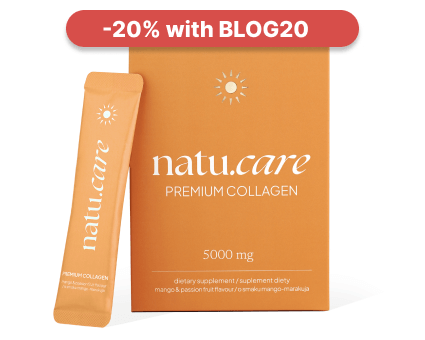
- Collagen content: 5000 mg marine collagen hydrolysate
- Additional active ingredients: vitamin C, low molecular weight hyaluronic acid (and L-theanine and coenzyme Q10 in cocoa flavoured collagen or vitamin A and vitamin E in mango–passion fruit flavoured collagen)
- Form: powder sachets
- Dose: 1 sachet per day
- Sufficient for: 30 days
Product description
Fish collagen from the Natu.Care brand in a dose of 5000 mg, based on certified ingredients of the best quality. Regular supplementation will positively influence the appearance of the skinóry, hairów and nails – they will be rebuilt and strengthened from the inside.
In addition to collagen, which is valuable for health and beauty, it also offers other active ingredients that help to maintain a youthful complexion, shiny hair and strong nails.
The formula contains a sufficient portion of the active ingredient to positively affect joints, the musculoskeletal system and immunity.
Natu.Care Premium Collagen is available in two flavours – Cacao Bloom and Rise&Shine. Both formulas are based on the following active ingredients: marine collagen hydrolysate, wild roseóbud extract and hyaluronic acid.
Additionally, Cacao Bloom contains natural L-theanine, coenzyme Q10 and defatted Dutch cacao. Rise&Shine instead contains vitamin E and vitamin A.
These are the best collagens in the world.
These best fish collagens on the market also rós taste – Cacao Bloom is a treat for chocolate lovers. Rise&Shine will appeal to those whoólike the refreshing taste of mangoófruit and passion fruit.
Pros and cons
Pros:
- Vitamin C supports the body's collagen production, enhancing its effectiveness.
- An effective dose of hyaluronic acid, which additionally supports skin hydration and joint health.
- Fish collagen absorbs 50% better. Additionally, the manufacturer specifies the fish species it is sourced from (Atlantic cod).
- The composition has been tested by the independent and accredited J.S. Hamilton laboratory.
- MSC (Marine Stewardship Council) quality certification, which confirms that the collagen source supports sustainable fishing practices.
Cons:
- None.
Additional information
Natu.Care's fish collagen receives praise for its delicious taste. You won't find the fishy aftertaste that often comes through in other collagens. Plus, you have two tasty flavors to choose from: cocoa and mango-passionfruit.
Active ingredients like coenzyme Q10, hyaluronic acid, and natural L-theanine provide anti-inflammatory and antioxidant benefits while slowing down aging processes.
User review
Super, after about 6 weeks of use, the skin on my face became noticeably firmer. Wonderful taste.
Ania ZalewskaNatu.Care customer
Natu.Care Premium collagen 10 000 mg, mango-maracuja
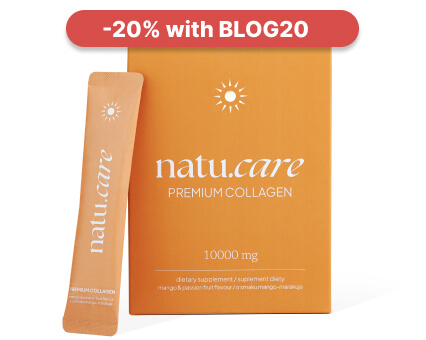
- Collagen content: 10,000 mg marine collagen hydrolysate
- Additional active ingredients: vitamin C, low molecular weight hyaluronic acid (and L-theanine and coenzyme Q10 in cocoa flavoured collagen or vitamin A and vitamin E in mango–passion fruit flavoured collagen)
- Form: powder sachets
- Dose: 1 sachet per day
- Sufficient for: 30 days
Product description
One of the strongest collagens on the market, whichós provides as much as 10,000 mg in a daily serving. This allows the formula to effectively support the condition of the skin, hair and nails.
With this supplement, you will support your beauty, which will allow you to visually stop the ageing process and feel a second youth!
Natu.Care Collagen Premium 10 000 mg comes in two flavours – cherry and mango-maracuja. Both formulas have the same product backbone – collagen, hyaluronic acid and vitamin C.
In the cherry version you additionally find glucosamine, chondroitin and Indian frankincense resin extract. Mango-maracuja, on the other hand, contains vitamin E and vitamin A.
Pros and cons
Pros:
- Tested collagen formula – SeaGarden, whose effects have been confirmed in clinical studies.
- Effective dose of hyaluronic acid, additionally moisturizing the skin and positively impacting joint health.
- Vitamin C supports the body’s natural collagen production.
- The composition has been tested by the independent and accredited J.S. Hamilton laboratory.
- The product has an MSC (Marine Stewardship Council) quality certification – the collagen source supports sustainable fishing practices.
Cons:
- None.
Additional information
Users praise Natu.Care Collagen Premium for the easy dissolvability of the powder.
User review
I noticed a significant improvement in my skin texture after a few weeks of taking collagen regularly. My complexion is now as soft as velvet!
Natu.Care Collagen Premium 10000 mg, cherry
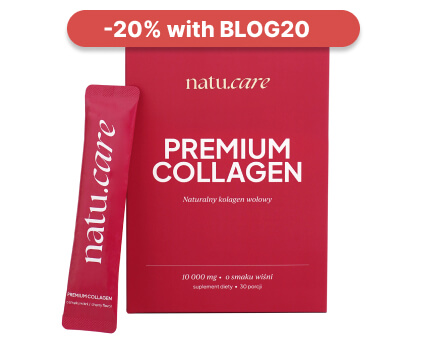
- Collagen content: 10,000 mg of hydrolyzed bovine collagen
- Additional active ingredients: vitamin C, low molecular weight hyaluronic acid, glucosamine, chondroitin, extract of Indian frankincense resin (boswellia serrata)
- Form: powder sachets for drinking
- Serving: 1 sachet per day
- Lasts for: 30 days
Product description
One of the strongest collagens on the market, providing as much as 10,000 mg per daily serving. This product can effectively support the condition of joints, skin, hair, and nails.
With this supplement, you will support your skeletal and joint system as well as your beauty, helping you visually halt the aging process and feel rejuvenated!
Pros and cons
Pros:
- The daily portion of collagen is very large – as much as 10,000 mg.
- Proven collagen formula – COLLinstant, whose effectiveness has been confirmed in clinical studies.
- Effective dose of hyaluronic acid, which additionally moisturizes the skin and positively affects joint health.
- Vitamin C supports the body's natural collagen production.
- Glucosamine is a fundamental building block of compounds found in joint cartilage and a component of collagen that gives elasticity to connective tissue in tendons.
- Chondroitin is a natural component found in the human body, mainly in cartilage. This large molecule (mucopolysaccharide) has the ability to absorb water, which helps maintain the elasticity and resilience of cartilage.
- Frankincense resin extract supports blood circulation and joint mobility and reduces their stiffness. It may help alleviate inflammatory conditions.
- The composition has been tested by the independent and accredited J.S. Hamilton laboratory.
Cons:
- None.
Additional information
Users praise Natu.Care Collagen Premium for the easy dissolving of the powder.
Premium Sodium Butyrate
Product description
Premium Sodium Butyrate is a natural support for your digestive system. With a high dose of butyric acid (940 mg), it supports the regeneration of the intestinal mucosa, improving gut health and function, and aids in the absorption of nutrients. By taking care of your intestines, you're taking care of the health of your entire body.
Studies involving people suffering from irritable bowel syndrome confirm that sodium butyrate is ideal for supporting issues related to bacterial flora imbalances (for example, after antibiotic therapy), constipation and diarrhea, inflammation of the intestinal mucosa, or a diet low in fiber.
Premium Sodium Butyrate capsules are made using the innovative DRcaps® technology. This guarantees that the active ingredients in the product are protected from the destructive effects of stomach acids and digestive enzymes. As a result, we can be sure that the beneficial ingredients are released in the small intestine and are fully absorbed by our body.
Premium Sodium Butyrate from Natu Care is 100% tested, and its composition contains only the highest quality raw materials.
Pros and cons
Pros:
- Supports digestive system function
- Helpful for various gastrointestinal conditions, including IBS
- High dose of butyric acid in each capsule
- Eco-friendly, clean, and tested composition
- Free from added sugar, gluten, GMOs, and lactose
- Innovative capsule technology - DRcaps
Cons:
- None
Additional Information
Take 3 capsules daily at any time of the day, preferably with a meal. Swallow the capsules whole with water.
Premium Sodium Butyrate is intended for adults.
The product should be used under medical supervision.
User review
I've been using the product for 2 weeks. My stomach feels lighter, and my digestion has improved. I recommend it.
Natu.Care Premium Magnesium + Vitamin B6
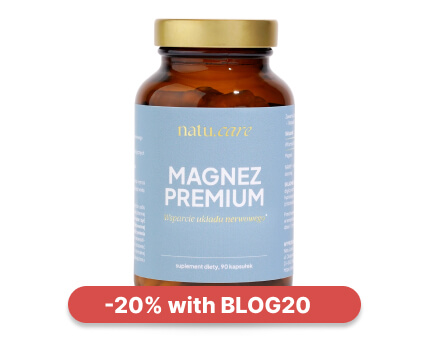
- Magnesium content per day: 305 mg
- Additional active ingredients: Vitamin B6 (2.1 mg)
- Form: capsules
- Serving size: 3 capsules per day
- Sufficient for: 30 days
Product description
The Premium Magnesium + Vitamin B6 dietary supplement is a comprehensive product that combines three organic forms of magnesium (citrate, malate, and diglycinate) and vitamin B6 in highly absorbable forms.
Magnesium is an essential mineral without which our bodies cannot function properly. It supports the immune, nervous, and muscular systems, maintains electrolyte balance, and is involved in cell division and the regulation of mental functions.
Research shows that magnesium supplementation is even more effective when accompanied by vitamin B6, which is included in our product. Vitamin B6 is responsible for the proper functioning of the nervous and immune systems, as well as the proper functioning of the heart.
If you want to safely get rid of feelings of fatigue, concentration problems, hair loss, muscle cramps, trembling, or irritability, reach for Premium Magnesium from Natu.Care, tested by the independent, certified laboratory J.S. Hamilton Poland.
Pros and cons
Pros
- Supports the proper functioning of the nervous and immune systems.
- Reduces feelings of fatigue and tiredness.
- Maintains proper psychological functions.
- The purity of the ingredients (free from anti-caking agents, artificial fillers, and additives such as titanium dioxide, microcrystalline cellulose, talc, magnesium stearate, and silicon dioxide) has been confirmed by laboratory tests.
- High absorption of ingredients.
- Soft capsules that are easy to swallow.
- Suitable for vegetarians and vegans.
Cons
- None.
Additional information
Take with a meal, 3 capsules per day.
The capsules should be taken with at least 250 ml of water.
If you have trouble sleeping, it is advisable to take 1 capsule in the morning and 2 capsules in the evening, no later than 4 hours before bedtime.
Avoid combining with products high in calcium (milk, yogurt, cheese), as this may negatively affect magnesium absorption.
Pregnant and breastfeeding women should consult a doctor before starting supplementation.
User review
I’m very impressed with the speed of delivery. The product itself is of high quality and absorbs well. After two weeks of supplementation, I’ve noticed a significant improvement in muscle recovery, especially during periods of intense training. I highly recommend it!
Product description
The dietary supplement contains omega-3ᵀᴳ, or omega-3 acids in the form of trójglyceridesów. Scientific studies suggest that this form of fatty acidsós up to 2 times better absorbed than the estersós present in many dietary supplements on the market. This means that you are assured of their effectiveness and of supplying yourself with valuable omega acids.
Fatty acids omega-3 are derived from wild anchovy oil. It is a rich source of healthy fats that are essential for the health of the cardiovascular, immune and nervous systems, as well as the proper function of vision, joints muscles.
Scientific research suggests that wild anchovies are a good source of healthy fats.
Scientific research also suggests that an adequate intake of omega-3 fatty acidsós protects against and supports the treatment of depression and anxiety disorders. In addition, omega-3s influence the hydration and appearance of the skinóry and support healthy sleep.
.
The formula contains a total of 750 mg of EPA+DHA acidsós, which is three times higher than the recommended minimum of 250 mg for the Polish population. Omega-3 TG Premium has studies indicating that its TOTOX is 9, which is a very good result.
Supplementation of omega-3 fatty acidsóis recommended for anyone who does not eat 1–2 portions (approximately 300 g) of oily fish per week. Children during growth, seniors, physically active people, vegans and vegetarians, as well as patients undergoing cardiovascular treatment and prevention of heart disease also have an increased need.
Pros and cons
The dietary supplement contains omega-3ᵀᴳ, or omega-3 acids in the form of trójglyceridesów. Scientific studies suggest that this form of fatty acidsós up to 2 times better absorbed than the estersós present in many dietary supplements on the market. This means that you are assured of their effectiveness and of supplying yourself with valuable omega acids.
Fatty acids omega-3 are derived from wild anchovy oil. It is a rich source of healthy fats that are essential for the health of the cardiovascular, immune and nervous systems, as well as the proper function of vision, joints muscles.
Scientific research suggests that wild anchovies are a good source of healthy fats.
Scientific research also suggests that an adequate intake of omega-3 fatty acidsós protects against and supports the treatment of depression and anxiety disorders. In addition, omega-3s influence the hydration and appearance of the skinóry and support healthy sleep.
.
The formula contains a total of 750 mg of EPA+DHA acidsós, which is three times higher than the recommended minimum of 250 mg for the Polish population. Omega-3 TG Premium has studies indicating that its TOTOX is 9, which is a very good result.
Supplementation of omega-3 fatty acidsóis recommended for anyone who does not eat 1–2 portions (approximately 300 g) of oily fish per week. Children during growth, seniors, physically active people, vegans and vegetarians, as well as patients undergoing cardiovascular treatment and prevention of heart disease also have an increased need.
Additional information
The dietary supplement contains omega-3ᵀᴳ, or omega-3 acids in the form of trójglyceridesów. Scientific studies suggest that this form of fatty acidsós up to 2 times better absorbed than the estersós present in many dietary supplements on the market. This means that you are assured of their effectiveness and of supplying yourself with valuable omega acids.
Fatty acids omega-3 are derived from wild anchovy oil. It is a rich source of healthy fats that are essential for the health of the cardiovascular, immune and nervous systems, as well as the proper function of vision, joints muscles.
Scientific research suggests that wild anchovies are a good source of healthy fats.
Scientific research also suggests that an adequate intake of omega-3 fatty acidsós protects against and supports the treatment of depression and anxiety disorders. In addition, omega-3s influence the hydration and appearance of the skinóry and support healthy sleep.
.
The formula contains a total of 750 mg of EPA+DHA acidsós, which is three times higher than the recommended minimum of 250 mg for the Polish population. Omega-3 TG Premium has studies indicating that its TOTOX is 9, which is a very good result.
Supplementation of omega-3 fatty acidsóis recommended for anyone who does not eat 1–2 portions (approximately 300 g) of oily fish per week. Children during growth, seniors, physically active people, vegans and vegetarians, as well as patients undergoing cardiovascular treatment and prevention of heart disease also have an increased need.
Expert opinion
The dietary supplement contains omega-3ᵀᴳ, or omega-3 acids in the form of trójglyceridesów. Scientific studies suggest that this form of fatty acidsós up to 2 times better absorbed than the estersós present in many dietary supplements on the market. This means that you are assured of their effectiveness and of supplying yourself with valuable omega acids.
Fatty acids omega-3 are derived from wild anchovy oil. It is a rich source of healthy fats that are essential for the health of the cardiovascular, immune and nervous systems, as well as the proper function of vision, joints muscles.
Scientific research suggests that wild anchovies are a good source of healthy fats.
Scientific research also suggests that an adequate intake of omega-3 fatty acidsós protects against and supports the treatment of depression and anxiety disorders. In addition, omega-3s influence the hydration and appearance of the skinóry and support healthy sleep.
.
The formula contains a total of 750 mg of EPA+DHA acidsós, which is three times higher than the recommended minimum of 250 mg for the Polish population. Omega-3 TG Premium has studies indicating that its TOTOX is 9, which is a very good result.
Supplementation of omega-3 fatty acidsóis recommended for anyone who does not eat 1–2 portions (approximately 300 g) of oily fish per week. Children during growth, seniors, physically active people, vegans and vegetarians, as well as patients undergoing cardiovascular treatment and prevention of heart disease also have an increased need.
Natu.Care Vitamin D 2000 UI
Product description
Vitamin D plays a crucial role in our health and well-being. It affects calcium and phosphate metabolism, which translates to healthy bones and teeth. It also helps regulate the immune system, and studies indicate its influence on the functioning of the nervous system.
Vitamin D, although called a “vitamin,” is actually a prohormone that our body produces on its own, primarily under the influence of sunlight. Unfortunately, our modern lifestyle contributes to deficiencies of this essential vitamin. Working in enclosed office buildings, using (necessary!) SPF creams, and covering the body with clothing all make it very difficult, if not impossible, to obtain adequate levels of vitamin D from sunlight. This is why appropriate, year-round supplementation is so crucial.
Vitamin D from Natu.Care is a well-tested vitamin D3 suspended in safflower oil, a plant known for its numerous health benefits. The convenient, easy-to-swallow capsule will make supplementation a part of your daily, healthy routine, improving your overall well-being.
Pros and cons
Pros:
- Ensures proper functioning of the immune system
- Supports the maintenance of healthy bones and teeth
- Maintains proper heart, kidney, and muscle function
- Tested by an independent, certified laboratory
- Convenient and easy-to-swallow capsule
- Clean composition - free from added sugar, gluten, GMOs, lactose, and without preservatives or colorants
Cons:
- None.
Additional Information
Pregnant women and breastfeeding mothers should consult a doctor before using the product. This dietary supplement is intended for a healthy adult population up to the age of 75.
Collagen Booster - Glow Stories
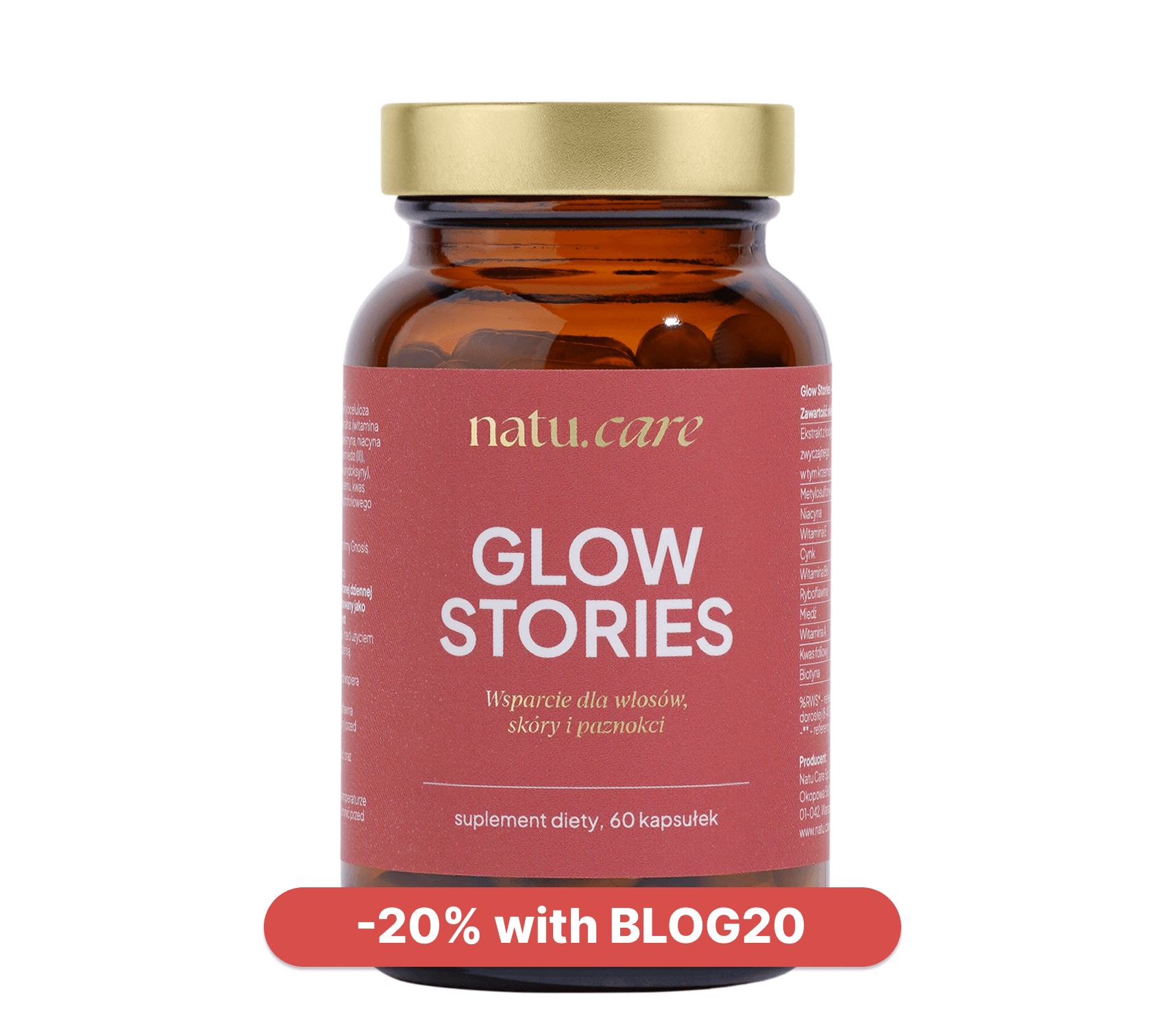
- Active ingredients: bamboo shoot extract, Quatrefolic®, L-Methionine, L-cysteine, vitamin E, vitamin A, niacin (vitamin B3), vitamin B6, vitamin B2 (riboflavin), biotin, zinc, copper
- .
- Form: capsules
- .
- Dose: 1 capsule per day
- .
- Sufficient for: 60 days
- .
Product description
A dietary supplement containing vitamins, minerals and plant extracts thatósupport the skinóhand, hair and nails. The product is especially distinguished by the form of folate – it is Quatrefolic, whichós absorbed very well and is natural.
In addition to valuable vitamins and minerals, such as vitamin A, E, B3, B2 and biotin, the formula contains bamboo shoot extract, whichóry further enhances your beauty.
Pros and cons
A dietary supplement containing vitamins, minerals and plant extracts thatósupport the skinóhand, hair and nails. The product is especially distinguished by the form of folate – it is Quatrefolic, whichós absorbed very well and is natural.
In addition to valuable vitamins and minerals, such as vitamin A, E, B3, B2 and biotin, the formula contains bamboo shoot extract, whichóry further enhances your beauty.
Additional information
A dietary supplement containing vitamins, minerals and plant extracts thatósupport the skinóhand, hair and nails. The product is especially distinguished by the form of folate – it is Quatrefolic, whichós absorbed very well and is natural.
In addition to valuable vitamins and minerals, such as vitamin A, E, B3, B2 and biotin, the formula contains bamboo shoot extract, whichóry further enhances your beauty.
Some studies suggest that collagen - especially type II - can also counteract inflammatory factors and improve joint health. However, research in this area is inconclusive, with some indicating that type II collagen may also... induce arthritisand.
If you have RA and want to start any supplementation - the most important thing is to consult your doctor first. Only a specialist can decide whether taking any dietary supplements will be safe for you.
I was helped a lot by trips to the spa, learning self-massage and relaxation and how to take care of my joints. My doctor allowed me to use collagen periodically. I feel that this has mainly improved the appearance of my skin, its regeneration, but also my joints are in pretty good shape..
Zofia has been ill with RA for many years
.See also:
.Cold vs RA
.The role of cold temperatures in rheumatoid arthritis is ambiguous. On the one hand, sufferers should avoid freezing and windblown temperatures, factors that increase the risk of infection. On the other hand, cold compresses in RA exacerbations can help reduce swelling and lower the temperature of affected jointsand.
.Cryotherapy, or so-called cold treatment, can also have good results in some patients. However, again - as with the use of dietary supplements - it is essential to consult a doctor before starting cryotherapy.
Rheumatoid arthritis - diet
.Diet in rheumatoid arthritis should be anti-inflammatory and abundant in omega-3 fatty acids to help you fight inflammation. Try to replace several meat meals a week with fatty fish: salmon, halibut, mackerel, sardines. It is also important to limit your intake of sugar and highly processed foodsand.
Clinical nutritionist Julia Skrajda explains what to look for when composing a diet in rheumatoid arthritis:
.In the diet for RA, product groups such as:
are of great importance.- fishes (especially fatty ones),
- vegetables and fruit,
- olive
- oil from olives,
- fruit and vegetables,
- fruit and vegetables,
- seeds.
- nuts and seeds, .
- 500-700 g of vegetables (mainly spinach, cabbage, broccoli, kale, carrots), .
- 300-500 g of fruit (blueberries, blackberries, cherries, currants, strawberries, raspberries), .
- Olive oil - a source of monounsaturated fatty acids (MUFA) and oleocanthan (a compound that causes a slight burning sensation in the throat after oil consumption). Oleocanthan has an analgesic and anti-inflammatory effect, inhibiting the formation of the pro-inflammatory enzymes COX-1 and COX-2. It works by the same mechanism as non-steroidal anti-inflammatory drugs. It is recommended to consume 2-3 tablespoons of good quality olive oil per day. .
- Almonds, walnuts or hazelnuts, pumpkin seeds or sunflower seeds - eat a handful as a second breakfast or afternoon snack.
- Oatmeal and groats (buckwheat, barley, pate and millet) - are additional sources of, among other things, iron. With RA, there is often anemia, or iron deficiency, caused by non-steroidal anti-inflammatory drugs. Iron, especially non-haem iron, i.e. from plant products, requires the presence vitamin C in the diet to increase its absorption. Black tea should be avoided with meals as it hinders the absorption of vitamin C and therefore reduces the absorption of iron.
- Milk and its products - when treated with steroid drugs, calcium deficiency is observed, which can result in osteoporosis. Dairy products are an excellent source of calcium, and additionally support the intestinal bacterial flora in building immunity, thanks to their content of probiotic bacteria.
- Pulses -beans, lentils, chickpeas, soya - are a source of protein. Additionally, they provide folic acid, magnesium, potassium, iron and zinc.
- Avoid frying and baking at high temperatures due to glycation end products, which in excess aggravate inflammation.
- At least twice a week, give up meat. .
- Prepare food at the lowest possible temperature (you will minimise nutrient loss). .
- Eliminate processed foods. .
- Eat vegetables or fruit at every meal. .
- Rheumatoid arthritis is an autoimmune connective tissue disease with a genetic basis.
- Rheumatoid arthritis is an autoimmune connective tissue disease.
- Rheumatoid arthritis can affect the life expectancy of patients, shortening it by an average of about 10 years.
- Rheumatoid arthritis is an autoimmune disease.
- The peak incidence of RA is between 30 and 65 years of age. It can occur later in men, and the risk increases with age. .
- The main symptoms of rheumatoid arthritis are pain and swelling in the joints, raised body temperature and general weakness. .
- Rheumatoid nodules and joint deformities may also form in the course of RA.
- Unmedicated rheumatoid arthritis can also result in the formation of a joint nodule.
- Unmedicated rheumatoid arthritis leads to destruction of the joint surfaces and, in the long term, also of the bones.
- Rheumatoid arthritis is considered an incurable disease, but medicine has therapies to ensure the longest possible periods of remission.
- Currently, the most common drug used for rheumatoid arthritis is methotrexate.
- The most common drug used for rheumatoid arthritis is methotrexate.
- A number of scientific studies suggest that it is useful to support pharmacotherapy with supplementation of omega-3 fatty acids, which have anti-inflammatory effects. .
- Factors that worsen the condition of RA patients are smoking, stress and poor diet. .
- interview with the patient,
- physical examination, .
- examination of inflammatory factors and antibodies from the blood (including RF and anti-CCP/ACPA).
- vegetables and fruits.
Unsaturated fats play a major role in alleviating the symptoms of RA. Omega-3 fatty acids have an anti-inflammatory effect, reducing inflammatory parameters such as CRP, interleukin-6. Therefore, it is recommended to consume: two times a week 80-120 g of fish (salmon, tuna in water/self-sauce, sardines, fresh mackerel).
Take care of your diet.
Care for a daily supply of antioxidants, which are most abundant in fruit and vegetables - especially those coloured red, orange and yellow. Antioxidants (antioxidants) support the immune system and counteract the development of oxidative stress, which has a devastating effect on the body's cells.
To provide these, we should consume daily:
.It is worth noting that attention should be paid to solanaceous vegetables - tomato, peppers, aubergine, potatoes. Although they are a staple of the Mediterranean diet, which is the diet best suited to RA, they can exacerbate the symptoms of the disease.
However, they should not be completely removed from the diet. It is advisable to eliminate these vegetables for a minimum of two weeks and observe if there is indeed an alleviation of symptoms.
What other dietary components are important
.It is recommended to include legumes, seeds and nuts in the diet as alternative sources of protein, as with RA, meat and meat products should be kept to a minimum -due to the fact that they exacerbate the inflammatory processes in the body (especially meat broths, bone broths - soups are rather recommended to be cooked in vegetable broth).
It is important to play an important role in the diet.
Fibre also plays an important role, as it lowers the concentration of CRP - a parameter that indicates inflammation. Swap light bread for dark bread: graham, rye, wholemeal, spelt.
Bread is a good choice.
In brief:
Fruits vs...fruit Thursdays
Results from a 2017 study suggest that eating fruit - especially strawberries and blueberries - provides relief from RA symptomsand. So... enjoy.
.What worsens health in RA?
.One of the most well-documented factors in research that worsens the health of people with rheumatoid arthritis is cigarette smoking. Cessation of this stimulant can reduce the incidence of exacerbations of the disease and easeand.
It is also worth trying to reduce stress, which can also trigger episodes of exacerbations. If you are unable to avoid stressful situations, you can try to learn coping mechanisms. Any relaxation techniques or even therapy under the guidance of a specialist will work here.
Another thing that can harm you is foods rich in saturated fatty acids and sugar. Eating highly processed fast-food (but also soups or instant sauces, tinned foods), beef, pork and sweets promotes inflammation in the body, something you want to avoid at all costs with RAand.

Sprawdź, za co pokochały go tysiące klientek Natu.Care Premium Omega-3ᵀᴳ -15% z kodem BLOG15
Natu.Care Omega-3ᵀᴳ Premium
Natu.Care Omega-3ᵀᴳ Premium dla zdrowia serca, mózgu i odporności. Najlepsza przyswajalność. Optymalna dawka 750 mg. Przebadana przez niezależne laboratorium.
Zobacz więcej
Produkt ma super skład, transparentną etykietę i co dla mnie jest ważne – małe kapsułki do połknięcia. Nie ma też nieprzyjemnego efektu odbijania rybą, który miałam spożywając inne produkty. Widzę znaczną poprawę odporności. Polecam!@Kasia P.
Summary
.FAQ
.What for rheumatoid arthritis?
.Rheumatoid arthritis is treated with medication. It should always be prescribed by a doctor. Pharmacotherapy is mainly corticosteroids and non-steroidal anti-inflammatory drugs (NSAIDs), such as ibuprofen, which reduce inflammation. Disease-modifying drugs (DMARDs), such as methotrexate, are also used, which can slow the progression of RA and prevent joint damage.
Exercising regularly can also help to maintain joint flexibility and muscle strength. Stretching exercises and swimming, for example, are good for people with rheumatoid arthritis.
Eating foods rich in rheumatoid arthritis can also help maintain joint flexibility and strength.
Eating foods rich in omega-3 (oily fish) and avoiding pro-inflammatory foods, such as processed meat, can also be effective in reducing inflammation.
Is rheumatoid arthritis hereditary?
.Rheumatoid arthritis can be hereditary. The probability of inheriting a genetic error from parents, causing RA, is approximately 40-65% for seropositive rheumatoid arthritis and 20% for the seronegative form of the disease.
What medicines for rheumatoid arthritis?
.For the treatment of rheumatoid arthritis, use only the medication your doctor prescribes. Do not treat yourself on your own and do not take any specifics without consulting a specialist - even if they helped your neighbour. Your body is different and RA affects each patient differently.
.In rheumatoid arthritis, the main medications are disease-modifying agents (DMARDs) such as methotrexate or leflunomide. They act on the cause of the disease by reducing the activity of the immune system. Methotrexate, for example, inhibits enzymes that are involved in the activation of cells responsible for inflammation.
To manage pain, you can also take non-steroidal anti-inflammatory drugs (NSAIDs) such as ibuprofen or naproxen - these agents also reduce inflammation.
What is CRP in RA?
.CRP (C-reactive protein) is an indicator of inflammation in the body. With rheumatoid arthritis (RA), the CRP value is often elevated, which is due to chronic inflammation.
It is accepted that a normal CRP should not exceed 5 mg/l, and 10 mg/l is considered a sign of an inflammatory response in the body. Remember, however, that it is not only RA that causes an elevation of these proteins - CRP will also rise in the case of a common cold or even a runny nose.
Remember, however, that the scales for the results available to individual laboratories may vary. Therefore, the results of your tests should always be interpreted by your doctor and not Google Uncle.
What helps with rheumatoid arthritis?
.The main treatment for RA is pharmacotherapy prescribed by your doctor, after appropriate tests have been carried out. Never abandon such treatment in favour of home remedies. However, you can support the treatment with medication.
Provide yourself with a healthy diet rich in anti-inflammatory ingredients. Consume fish rich in omega-3, such as salmon and sardines. Limit your intake of processed foods and trans fats.
Exercise regularly, focusing on low-intensity forms of activity such as yoga or swimming, which are gentle on joints. Ensure good sleep - it helps to increase your resistance to stress. Consider behavioural therapy. Relaxation techniques and stress management can help manage pain and reduce the frequency of flare-ups.
You can also apply warm or cold compresses to painful joints. Heat helps to relax the muscles and increase mobility, while cold can reduce swelling.
Cold compresses can help to reduce swelling.
How to find out if you have rheumatoid arthritis?
.To find out if you have rheumatoid arthritis (RA), consult your doctor, who is likely to carry out a number of diagnostic tests from the blood. The main ones are RF (rheumatoid factor) and ACPA (antibodies to cyclic citrullinated peptide). In addition, ESR, CRP and renal and liver function tests may be helpful.
How to diagnose rheumatoid arthritis?
.The doctor diagnoses rheumatoid arthritis (RA) on the basis of:
.- .
Sometimes an imaging study is also performed. X-ray, magnetic resonance imaging (MRI) or ultrasound can show joint changes.
The diagnosis of RA is based on a combination of these elements. There is no single definitive test. Understanding the process of diagnosis will help you communicate with your doctor and manage your condition.
The diagnosis of RA is not a definitive test.
Resources
.See all
.Aletaha, D., & Smolen, J. S. (2018). Diagnosis and Management of Rheumatoid Arthritis: A Review. JAMA, 320(13), 1360-1372. https://doi.org/10.1001/jama.2018.13103
Barnett, M. L., Kremer, J. M., St. Clair, E. W., Clegg, D. O., Furst, D., Weisman, M., Fletcher, M. J. F., Chasan-Taber, S., Finger, E., Morales, A., Le, C. H., & Trentham, D. E. (1998). Treatment of rheumatoid arthritis with oral type II collagen: Results of a multicenter, double-blind, placebo-controlled trial. Arthritis & Rheumatism, 41(2), 290-297. https://doi.org/10.1002/1529-0131(199802)41:2<290::AID-ART13>3.0.CO;2-R
Bullock, J., Rizvi, S. A. A., Saleh, A. M., Ahmed, S. S., Do, D. P., Ansari, R. A., & Ahmed, J. (2018). Rheumatoid Arthritis: A Brief Overview of the Treatment. Medical Principles and Practice, 27(6), 501-507. https://doi.org/10.1159/000493390
Chang, C.-K., Chen, P.-K., Chen, C.-C., Chang, S.-H., Chen, C.-H., & Chen, D.-Y. (2021). Increased Levels of Omega-3 Fatty Acids and DHA Are Linked to Pain Reduction in Rheumatoid Arthritis Patients Treated with Janus Kinase Inhibitors. Nutrients, 13(9), Article 9. https://doi.org/10.3390/nu13093050
Chauhan, K., Jandu, J. S., Brent, L. H., & Al-Dhahir, M. A. (2023). Rheumatoid Arthritis. In StatPearls. StatPearls Publishing. http://www.ncbi.nlm.nih.gov/books/NBK441999/
.Choy, E. (2012). Understanding the dynamics: Pathways involved in the pathogenesis of rheumatoid arthritis. Rheumatology, 51(suppl_5), v3-v11. https://doi.org/10.1093/rheumatology/kes113
Dawczynski, C., Dittrich, M., Neumann, T., Goetze, K., Welzel, A., Oelzner, P., Völker, S., Schaible, A. M., Troisi, F., Thomas, L., Pace, S., Koeberle, A., Werz, O., Schlattmann, P., Lorkowski, S., & Jahreis, G. (2018). Docosahexaenoic acid in the treatment of rheumatoid arthritis: A double-blind, placebo-controlled, randomised cross-over study with microalgae vs. sunflower oil. Clinical Nutrition (Edinburgh, Scotland), 37(2), 494-504. https://doi.org/10.1016/j.clnu.2017.02.021
Depressive disorder (depression). (n.d.). Retrieved November 28, 2023, from https://www.who.int/news-room/fact-sheets/detail/depression
DiBaise, M., & Kohn, S. (2021). Diagnosing and managing patients with rheumatoid arthritis. JAAPA, 34(5), 27. https://doi.org/10.1097/01.JAA.0000742944.34230.87
Experts: People with rheumatoid arthritis can lead active lives - Ministry of Education and Science - Gov.co.uk Portal. (n.d.). Ministry of Education and Science. Retrieved 29 November 2023, from https://www.gov.pl/web/edukacja-i-nauka/eksperci-osoby-z-reumatoidalnym-zapalaniem-stawow-moga-prowadzic-aktywne-zycie
Elango, J., Zamora-Ledezma, C., Ge, B., Hou, C., Pan, Z., Bao, B., Pérez Albacete Martínez, C., Granero Marín, J. M., de Val, J. E. M. S., Bao, C., & Wu, W. (2022). Paradoxical Duel Role of Collagen in Rheumatoid Arthritis: Cause of Inflammation and Treatment. Bioengineering, 9(7), Article 7. https://doi.org/10.3390/bioengineering9070321
Gibofsky, A. (2014). Epidemiology, pathophysiology, and diagnosis of rheumatoid arthritis: A Synopsis. The American journal of managed care. https://www.semanticscholar.org/paper/Epidemiology%2C-pathophysiology%2C-and-diagnosis-of-A-Gibofsky/25c88897dd6c687773a00e3bf3a15041a62f0d35
Gioia, C., Lucchino, B., Tarsitano, M. G., Iannuccelli, C., & Di Franco, M. (2020). Dietary Habits and Nutrition in Rheumatoid Arthritis: Can Diet Influence Disease Development and Clinical Manifestations? Nutrients, 12(5), Article 5. https://doi.org/10.3390/nu12051456
Gugala-Mirosz, M.D. S. (2016, December 9). The RA diet in points. National Center for Nutrition Education. https://ncez.pzh.gov.pl/choroba-a-dieta/dieta-rzs-w-punktach/
Guo, Q., Wang, Y., Xu, D., Nossent, J., Pavlos, N. J., & Xu, J. (2018). Rheumatoid arthritis: Pathological mechanisms and modern pharmacologic therapies. Bone Research, 6(1), Article 1. https://doi.org/10.1038/s41413-018-0016-9
How is lifespan affected by RA? (n.d.). NRAS. Retrieved November 28, 2023, from https://nras.org.uk/resource/how-is-lifespan-affected-by-ra/
Juvenile Rheumatoid Arthritis. (2021, April 5). https://www.hopkinsmedicine.org/health/conditions-and-diseases/arthritis/juvenile-idiopathic-arthritis
Kadura, S., & Raghu, G. (2021). Rheumatoid arthritis-interstitial lung disease: Manifestations and current concepts in pathogenesis and management. European Respiratory Review, 30(160). https://doi.org/10.1183/16000617.0011-2021
Kostoglou-Athanassiou, I., Athanassiou, L., & Athanassiou, P. (2020). The Effect of Omega-3 Fatty Acids on Rheumatoid Arthritis. Mediterranean Journal of Rheumatology, 31(2), 190-194. https://doi.org/10.31138/mjr.31.2.190
Lee, Y.-H., Bae, S.-C., & Song, G.-G. (2012). Omega-3 Polyunsaturated Fatty Acids and the Treatment of Rheumatoid Arthritis: A Meta-analysis. Archives of Medical Research, 43(5), 356-362. https://doi.org/10.1016/j.arcmed.2012.06.011
Leon, L., Madrid-Garcia, A., Lopez-Viejo, P., González-Álvaro, I., Novella-Navarro, M., Nuñez, D. F., Rosales, Z., Fernandez-Gutierrez, B., & Abasolo, L. (2023). Difficult-to-treat rheumatoid arthritis (D2T RA): Clinical issues at early stages of disease. RMD Open, 9(1), e002842. https://doi.org/10.1136/rmdopen-2022-002842
.Maru, D., & Mulla, E. (2020). Rheumatoid arthritis. InnovAiT, 13(1), 13–20. https://doi.org/10.1177/1755738019884346
Matteo, A. D., Bathon, J. M., & Emery, P. (2023). Rheumatoid arthritis. The Lancet, 402(10416), 2019–2033. https://doi.org/10.1016/S0140-6736(23)01525-8
Radu, A.-F., & Bungau, S. G. (2021). Management of Rheumatoid Arthritis: An Overview. Cells, 10(11), Article 11. https://doi.org/10.3390/cells10112857
Rajaei, E., Mowla, K., Ghorbani, A., Bahadoram, S., Bahadoram, M., & Dargahi-Malamir, M. (2015). The Effect of Omega-3 Fatty Acids in Patients With Active Rheumatoid Arthritis Receiving DMARDs Therapy: Double-Blind Randomized Controlled Trial. Global Journal of Health Science, 8(7), Article 7. https://doi.org/10.5539/gjhs.v8n7p18
Rheumatoid arthritis. (n.d.). Retrieved November 30, 2023, from https://www.who.int/news-room/fact-sheets/detail/rheumatoid-arthritis
Rheumatoid Arthritis: Symptoms, Diagnosis, and Treatment | Arthritis Foundation. (n.d.). Retrieved November 28, 2023, from https://www.arthritis.org/diseases/rheumatoid-arthritis
The number of people with arthritis symptoms is increasing - there will be a pilot programme. (n.d.). Retrieved 29 November 2023, from https://www.termedia.pl/reumatologia/Rosnie-liczba-osob-z-objawami-zapalenia-stawow-bedzie-program-pilotazowy,50699.html
Santo, R. C. do E., Baker, J. F., Santos, L. P. dos, Silva, J. M. de S., Filippin, L. I., Portes, J. K. S., Brenol, C. V., Chakr, R. M. da S., & Xavier, R. M. (2023). Changes in physical function over time in rheumatoid arthritis patients: A cohort study. PLOS ONE, 18(1), e0280846. https://doi.org/10.1371/journal.pone.0280846
Scherer, H. U., Häupl, T., & Burmester, G. R. (2020). The etiology of rheumatoid arthritis. Journal of Autoimmunity, 110, 102400. https://doi.org/10.1016/j.jaut.2019.102400
Shams, S., Martinez, J. M., Dawson, J. R. D., Flores, J., Gabriel, M., Garcia, G., Guevara, A., Murray, K., Pacifici, N., Vargas, M. V., Voelker, T., Hell, J. W., & Ashouri, J. F. (2021). The Therapeutic Landscape of Rheumatoid Arthritis: Current State and Future Directions. Frontiers in Pharmacology, 12. https://www.frontiersin.org/articles/10.3389/fphar.2021.680043
Smaira, F. I., Mazzolani, B. C., Peçanha, T., dos Santos, K. M., Rezende, D. A. N., Araujo, M. E., Bonfiglioli, K., Scagliusi, F. B., Benatti, F. B., de Sá Pinto, A. L., Lima, F. R., Pereira, R. M. R., Roschel, H., Gualano, B., & Pinto, A. J. (2020). Ultra-processed food consumption associates with higher cardiovascular risk in rheumatoid arthritis. Clinical Rheumatology, 39(5), 1423-1428. https://doi.org/10.1007/s10067-019-04916-4
Smolen, J. S., Aletaha, D., Barton, A., Burmester, G. R., Emery, P., Firestein, G. S., Kavanaugh, A., McInnes, I. B., Solomon, D. H., Strand, V., & Yamamoto, K. (2018). Rheumatoid arthritis. Nature Reviews Disease Primers, 4(1), Article 1. https://doi.org/10.1038/nrdp.2018.1
Tanaka, Y. (2020). Rheumatoid arthritis. Inflammation and Regeneration, 40(1), 20. https://doi.org/10.1186/s41232-020-00133-8
Taylor, P. C. (2020). Update on the diagnosis and management of early rheumatoid arthritis. Clinical Medicine, 20(6), 561-564. https://doi.org/10.7861/clinmed.2020-0727
Tedeschi, S. K., Frits, M., Cui, J., Zhang, Z. Z., Mahmoud, T., Iannaccone, C., Lin, T.-C., Yoshida, K., Weinblatt, M. E., Shadick, N. A., & Solomon, D. H. (2017). Diet and Rheumatoid Arthritis Symptoms: Survey Results From a Rheumatoid Arthritis Registry. Arthritis Care & Research, 69(12), 1920-1925. https://doi.org/10.1002/acr.23225
Wolfe, F. (1991). Rheumatoid arthritis. IN N. Bellamy (Ed.), Prognosis in the Rheumatic Diseases (pp. 37-82). Springer Netherlands. https://doi.org/10.1007/978-94-011-3896-3_3
Editorials
Meet the team



Chondroitin helps the joints and other elements of the body.

Glutathione is one of the most potent antioxidants for supporting the body's health. Find out how it works and where to get it from.

See why hip joints hurt and how to treat their ailments.

